Blog Home
Behind the design – Quentin Peacock’s fantastic new design for our future King
This year we mark the 40th Birthday of our future King, Prince William.
Coins that are being issued to mark this birthday are extremely important – when William eventually becomes King, coins issued for him during the Queen’s historic reign are going to be highly sought after by collectors.
And now a brand new coin has been issued by Guernsey and features a fantastic new design by artist Quentin Peacock.
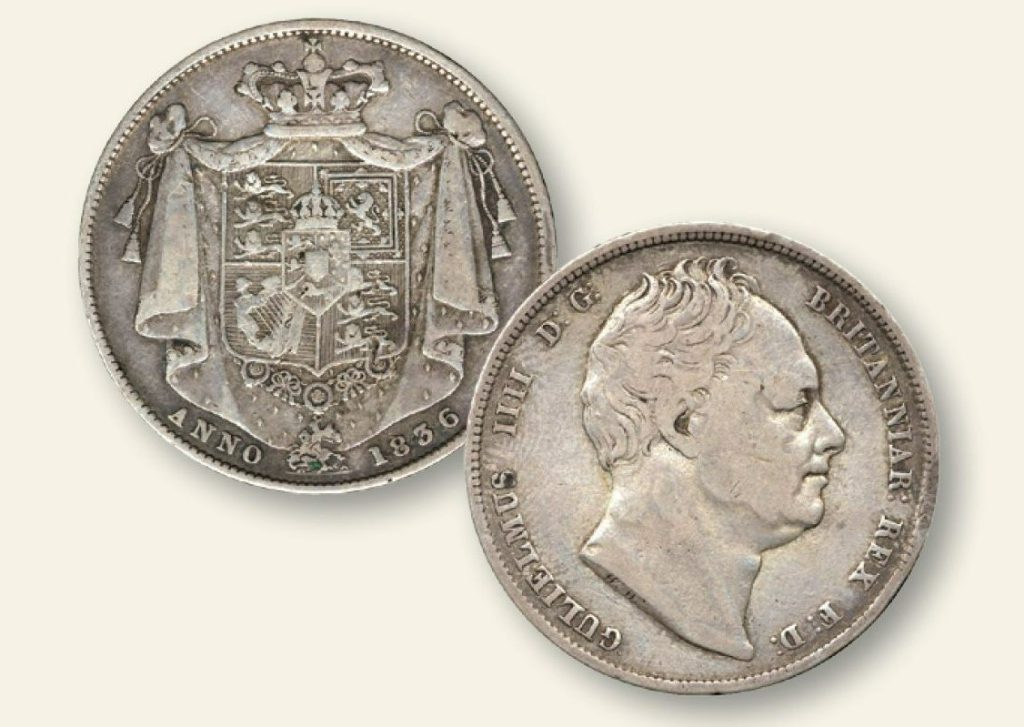
The design takes inspiration from the original Crown coins issued during the reign of the last King William – King William IV.
Any historic coin collector will be aware of this iconic important coin.
During the reign of William IV, the Royal Mint had two established and now legendary engravers – Benedetto Pistrucci and William Wyon. However, in 1820, Frenchman Jean Merlen arrived at the Mint.
Merlen’s design is one of the most highly rated, yet strangely least well-known, reverse designs to grace a British coin. A facet that makes it particularly desirable to knowledgeable collectors.
The ‘Crowned Shield’ has only been seen a handful of times. In fact, the Crown Coin was only issued in 1831 and 1834, and never entered circulation! This, combined with the fact that William IV only reigned for 7 years, makes the William IV Crown one of the most sought after coins in British numismatic history!
And now Quentin Peacock has produced a fantastic new design to mark the 40th Birthday of our future King, Prince William – who is likely to be the first King William since the 1800s.

This brand new design features a crowned shield with ’40’ in the centre. It’s a new design that pays homage to one of the most interesting and collectable coins in British history.
There might even be a few very lucky collectors out there with the opportunity to pair the two coins together!
We have a limited number of coins available in the British Isles Prince William 40th Birthday range, and you can secure yours now by following the link below.
If you’re interested…
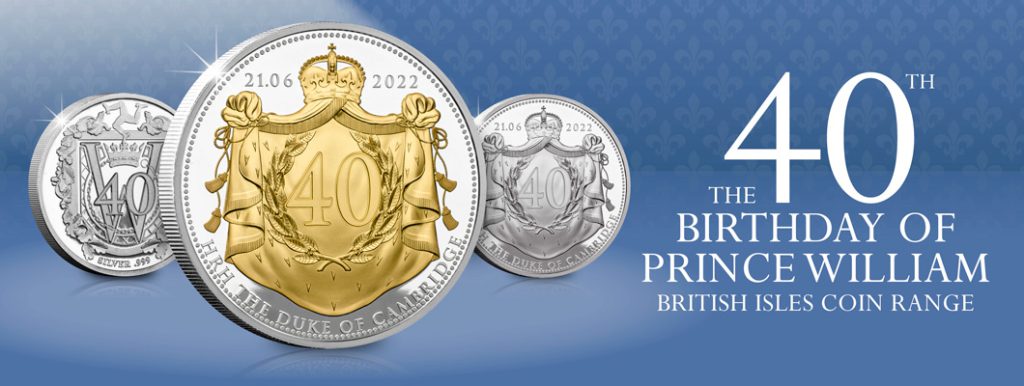
Click here to view the full range of Prince William 40th Birthday Coins >>
The Story of the Falklands Conflict – told through a Brand New Set of Commemoratives
For many it’s hard to believe that it’s been 40 years since the Falklands conflict took place.
It’s a conflict our nation remembers only too well. It was one of the first military endeavours that had been televised, with daily reports being broadcast to our screens, reports of heroic fighting and of course, sadly, casualties.
Indeed, it’s to all those that served our country in the Falklands that we’re proud to dedicate a superb set of new commemoratives – issued for the 40th anniversary.
I’d like to talk you through each of the designs, and in doing so tell the story of the Falklands conflict…
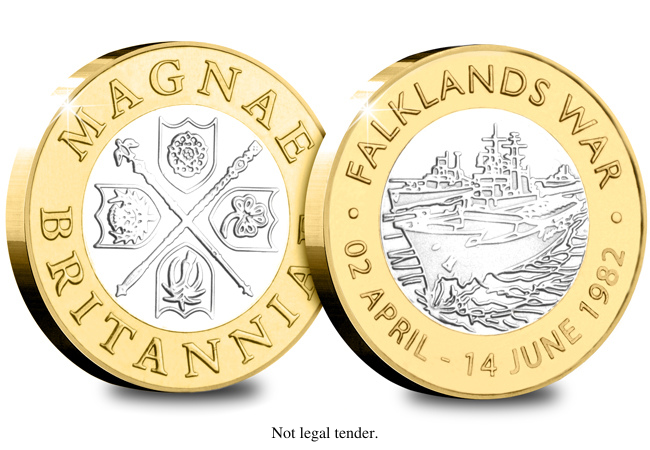
Our battleships crossing the Atlantic
In a move condemned by the United Nations, in 1976 Argentinian forces occupied the Falkland Islands and South Georgia. In the weeks that followed, islanders were forcibly deported.
In response, for the first time since the Second World War, all branches of the British armed forces were deployed and within days a British task force set sail across the Atlantic.

Troops landing on the Falkland Islands
The Task Force landed 4,000 troops in the East Falklands. Goose Green was the first settlement to be taken by British forces. British troops then face a difficult journey through tough terrain, enemy minefields, and hostile weather conditions.
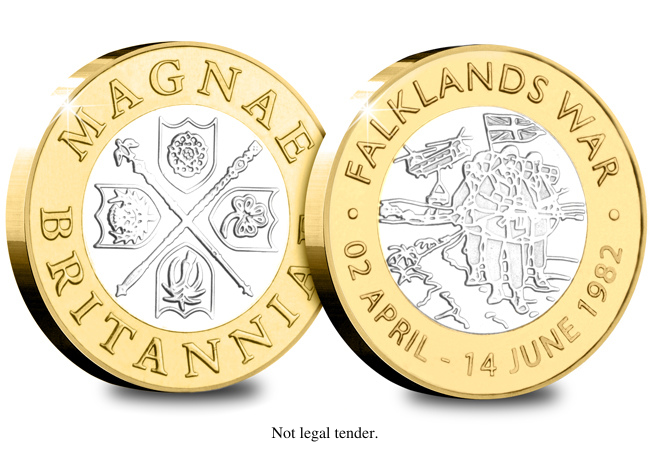
British troops ‘yomping’ across difficult terrain on the Islands
The design of this commemorative pays homage to one of the most famous images from the conflict, taken by Royal Marines photographer Peter Holdgate, showing a Corporal with a Union flag fixed to his pack.
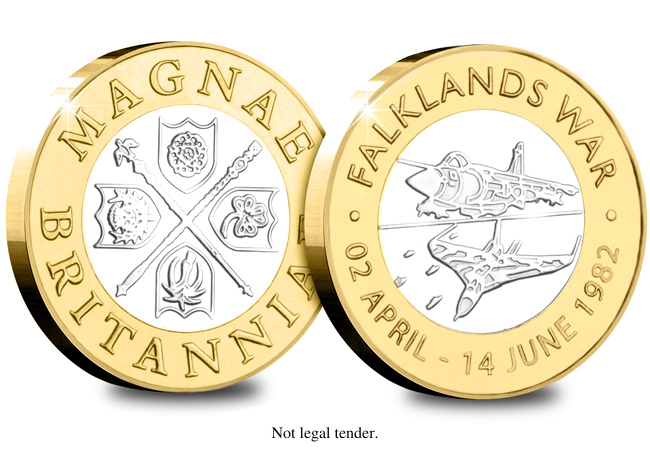
British aircraft patrolling the skies
British aircraft played a key role in the conflict, most famously with the Harrier jets and the Vulcan bomber – two planes that are still strong in British consciousness because of their important role in defending the Falklands.
Although at the start of the conflict Argentina seemed to have an advantage in the air with over 100 aircraft of varying types, it was the strategy of the British Air Force that meant the British pilots were able to beat the odds and take control of the skies.
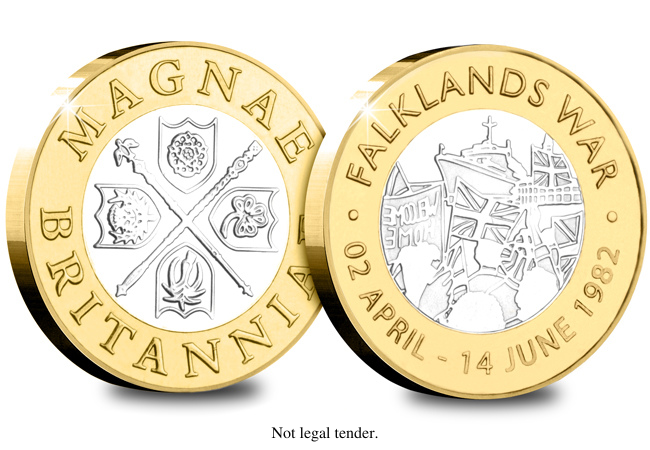
Returning to a Hero’s welcome
British troops were eventually able to make their way home, with huge crowds gathering in Portsmouth and Southampton to welcome them back – a well deserved hero’s welcome on their return.
This BRAND NEW set of commemoratives tells the story of the conflict and comes complete in a presentation pack to display and store them for years to come. I hope that you agree that it’s a perfect tribute to this important moment in British military history.
Did you serve in the Falklands or have memories of family or friends that were involved? As part of our remembering of the conflict 40 years since the invasion, we’d love to hear your stories in the comments below.
If you’re interested…
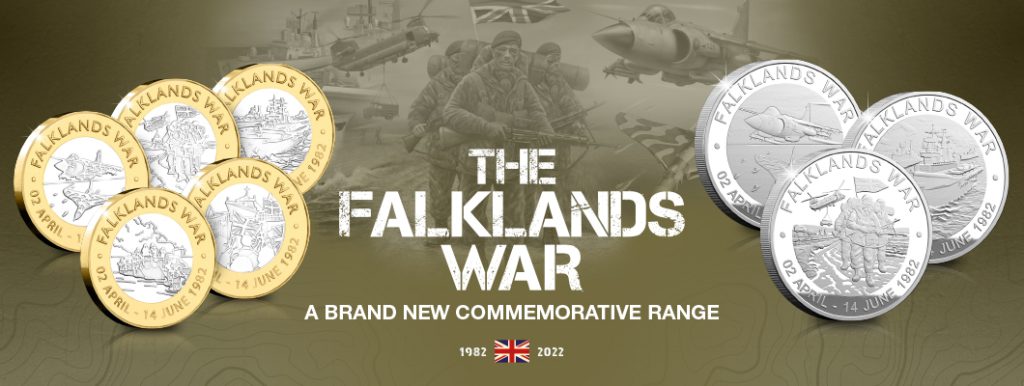
Click here to view the full range of Falklands War Commemoratives >>
ROYAL MINT ANNOUNCEMENT: The Queen’s Reign £5 Series…
As we mark Her Majesty the Queen’s remarkable 70-year reign this year, The Royal Mint have just announced a brand new three-coin series!
Highlighting The Queen’s personal commitment to her people, communities, and to the Commonwealth nations, the three coins are due to be issued this summer and feature designs by artist P.J. Lynch. Each coin will fittingly represent one of the three key areas of Her Majesty’s reign, along with a UK FIRST — The Queen’s signature!
The first coin will feature the honours and awards she bestows on individuals for their service, the second highlights her patronage and support of charities, and the third will celebrate Her Majesty’s tireless work for the Commonwealth.
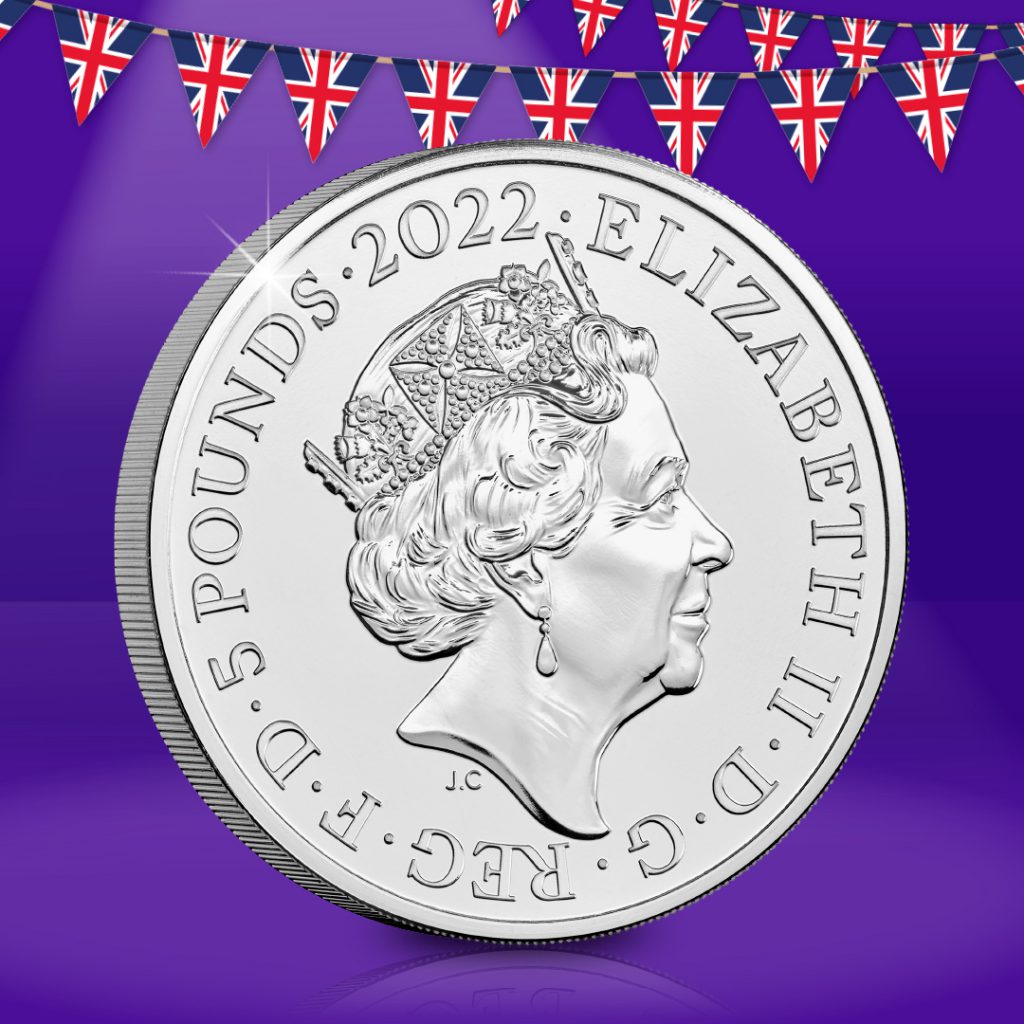
Releasing this summer!
All three coins are set to be released this summer, with the first coin in June, the second in July and the final of the series released in August.
This truly is the ultimate tribute to Her Majesty the Queen and her incredible dedication to the Crown over the last 70 years.
Make sure you don’t miss out on owning this new coin series, and sign up to our BU Pack subscription service. Find out more about the BU Pack subscription service here.

